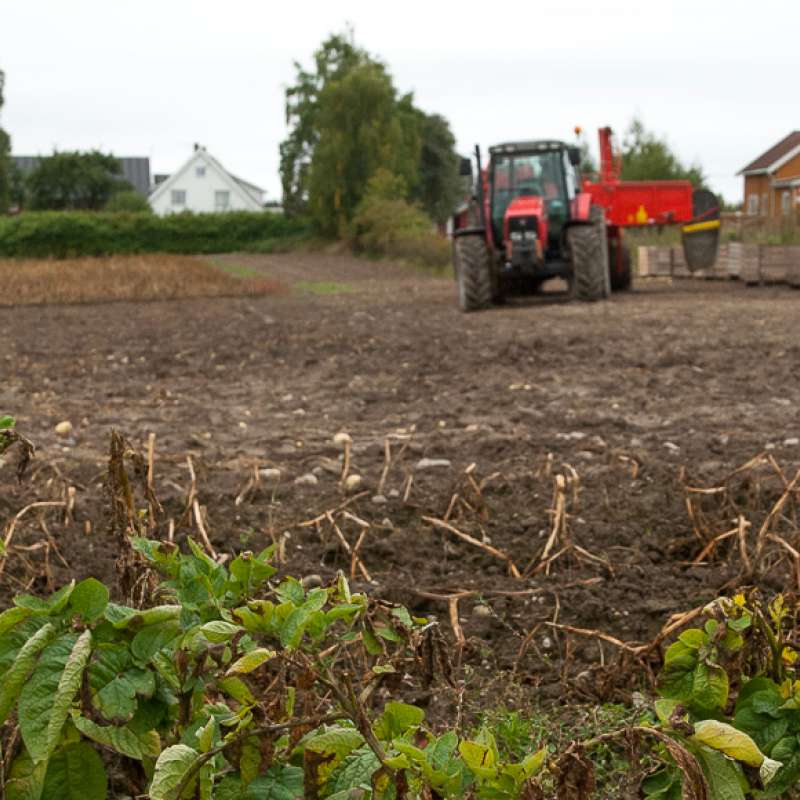Ingeborg Klingen
Avdelingsleder/forskningssjef
Biografi
Jeg leder Avdeling skadedyr og ugras i skog-, jord- og hagebruk og har 20 års erfaring som prosjektleder og 13 år som leder av avdelinger/ seksjoner ved NIBIO. Min forskningsvisjon er å utvikle fremtidens “best of” Integrerte Plantevern som vil føre til en bærekraftig matproduksjon gjennom en effektiv bekjempelse av skadegjørere og minimal bruk av syntetiske plantevernmidler.
Mine mål er derfor å:
- Utvikle kunnskap om samspill mellom planter, skade- og nytteorganismer som kan brukes i nye og innovative plantevernstrategier
- Utvikle nye og effektive biokontroll verktøy
- Kombinere ny teknologi med biologisk kontroll for mer presise, effektive og økonomisk bærekraftige plantevernstrategier
- Formidle kunnskap til næring, forvaltning og allmennheten som vil være med på å fremme bruken og tilgangen til biologiske kontrollmetoder som viktige verktøy i Integrert Plantevern.
Hovedfokuset for min forskning er integrert plantevern og biologisk bekjempelse av skadedyr. Mitt spesialfelt er insektpatologi og samspillet mellom insekt- og middpatogene sopp med planter skade- og nyttedyr og hvordan dette kan brukes i mikrobiologisk bekjempelse av skadedyr. Jeg jobber med begge hovedgruppene av insekt- og middpatogene sopp som hører til Putesoppene (Hypocreales) og Insektmuggsoppene (Entomophtoromycota).
Sammendrag
Det er ikke registrert sammendrag
Sammendrag
Background The stink bugs, Nezara viridula L. and Piezodorus guildinii Westwood (Hemiptera: Pentatomidae) are the most important and widespread species of polyphagous stink bugs in the tropical and subtropical regions of Latin America, which affect the quality and yield of the common bean (Phaseolus vulgaris L.). The use of synthetic chemical insecticides is the major control strategy to manage stink bugs in common beans and alternatives are needed. In this study, mortality and median Lethal Time (LT50) of two Cuban isolates of the entomopathogenic fungus Beauveria bassiana (18 S-O-R and 96 P-O-E), as well as one commercial Cuban isolate (Bb-18), at a concentration of 1 × 108 conidia/ml were evaluated. These evaluations were conducted against both stink bug species using Petri dish bioassays and a semi-field experiment in common beans. Results In Petri dish bioassays, the isolates 18 S-O-R and 96 P-O-E caused 100% mortality of both N. viridula and P. guildinii. This was significantly higher than for isolate Bb-18, which caused 86.3% N. viridula and 81.3% P. guildinii mortality. In the semi-field experiment, when pooling both stink bug species, total mortality after 14 days was 91.3% for 18 S-O-R, 80.0% for 96 P-O-E and 73.8% for Bb-18 isolates. LT50 value for isolate 18 S-O-R tested under laboratory conditions was 6.04 ± 0.18 days for N. viridula and 5.32 ± 0.14 days for P. guildinii at the same concentration of 1 × 108 conidia/ml. LT50 value for isolate 18 S-O-R in semi field was 6.79 ± 0.37 days for N. viridula and 7.71 ± 0.32 days for P. guildinii at 1 × 108 conidia/ml. Conclusion The study highlights the potential of B. bassiana 18 S-O-R as a promising candidate for control of stink bugs in common bean under tropical conditions as an alternative to conventional chemical insecticides in integrated pest management (IPM) programs. Moving forward, further research should focus on validating the efficacy under diverse field conditions and integrating application methods into practical IPM approaches. Future use of B. bassiana will enhance sustainability and reduce environmental impacts associated with pesticide use. Keywords Nezara viridula, Piezodorus guildinii, Entomopathogenic fungi, Hypocreales, Biological control, Common bean
Sammendrag
Det er ikke registrert sammendrag
Forfattere
Ritter Atoundem Guimapi Berit Nordskog Anne-Grete Roer Hjelkrem Ingeborg Klingen Ghislain Tchoromi Tepa-Yotto Manuele Tamò Karl ThunesSammendrag
Det er ikke registrert sammendrag

